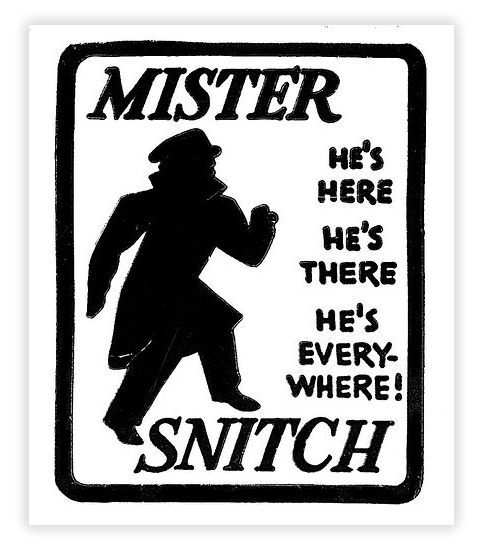We’re still doing a weekly newsletter… we’re just posting pieces of it every day. The news is fresher this way…
NEWS FLASH: DEA’S “MULTI-LEVEL SNITCHING” PROGRAM PRONE TO ABUSE

The Drug Enforcement Administration boasts that its Confidential Source Program is critical to its pursuit of illegal narcotics trafficking. Then again, Wells Fargo claims it has a 160-year “culture of working together to help our customers,” and that didn’t prevent thousands of its employees from opening up phony accounts in customers’ names and badgering other workers to “upsell” any customer unlucky enough to walk through the door or answer the phone on a slow sales day.
Last week, the Department of Justice Office of Inspector General issued a report that will shock anyone who still believes professional wrestling is not fixed. The OIG revealed that “confidential sources can be motivated by factors other than combating crime, including financial gain and avoidance of punishment; therefore, care must be taken to evaluate and supervise their use.”
The DEA’s prime motivator is, it turns out, money. Between October 1, 2010, and September 30, 2015, the DEA handed out about $237 million to about 9,000 confidential sources. assigned to its domestic offices, with over 9,000 of those sources receiving approximately $237 million in payments for information or services they provided to the DEA, an average of over $26,000 a source. The payments included about $9.4 million to people who had been “deactivated” as a source.
The OIG found that DEA’s source payment program “exposes the DEA to an unacceptably increased potential for fraud, waste, and abuse, particularly given the frequency with which DEA offices utilize and pay confidential sources…”

The report comes after the wheels started coming off the Southern District of New York federal drug case against the nephews of the Venezuelan president Nicolás Maduro. The government’s key confidential sources appear to be tainted with credibility problems, having acknowledged improper conduct, including snorting cocaine and hiring prostitutes, while being paid by DEA. It is not yet clear whether the DEA knew what its informants were doing.
The OIG report cited another area of concern as being DEA’s oversight of confidential sources it categorizes as “Limited Use” (usually called “tipsters”). DEA policy specifies these people are sources who make information available independently without direction by the DEA. The Limited Use category is regarded by the DEA as low-risk, and thus DEA policy requires the least amount of supervision. Yet OIG “found that Limited Use sources were some of DEA’s highest paid sources, with 477 Limited Use sources during the period of our review having received an estimated $26.8 million.”
DEA “tipsters” include people employed by TSA at airports, and Amtrak personnel, who provide information about travelers. The report found that “DEA did not appropriately track all confidential source activity; did not document proper justifications for all source payments; and, at times, did not adequately safeguard traveler information.”

DEA does not only use sources. Instead, something like an Amway distribution chain, its sources themselves have sub-sources, and some of the DEA money is intended to be sprinkled on them, too. The OIG said it was “extremely concerned to discover the DEA condoned its confidential sources’ use of ‘sub-sources,’ who are individuals a source recruits and pays to perform activities or provide information related to the source’s work for the DEA. During our review of DEA files, we found evidence of sources who were paid based, in part, on the need to pay ‘sub-sources,’ but the information in the files was insufficient to allow us to determine the full extent of such payments. We found that the DEA has no controls, policies, or procedures for interactions with these ‘sub-sources.’
The deficiencies identified in the DEA audit, the OIG report said, “raise significant concerns about the adequacy of the current policies, procedures, and oversight associated with the DEA’s management of its Confidential Source Program.
Office of Inspector General, Dept. of Justice, Audit of the Drug Enforcement Administration’s Management and Oversight of its Confidential Source Program (Sept. 29, 2016)

